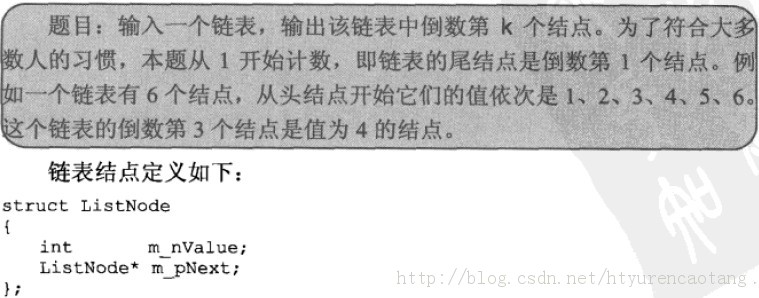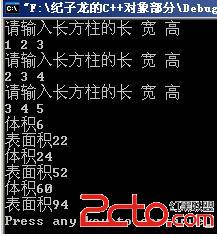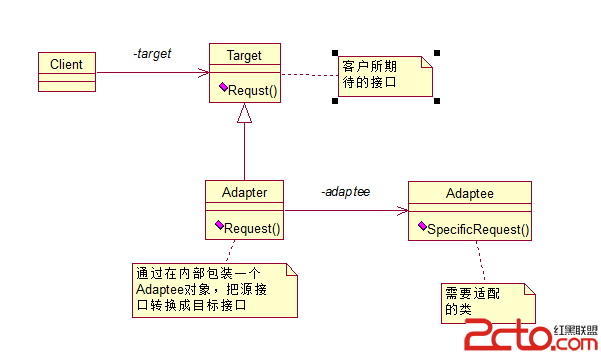C/C++ Hash表
Hash表这种数据结构在许多语言中是原生的一个集合对象,在实际中用途极广,主要有这么几个特点:
访问速度快
大小不受限制
按键进行索引,没有重复对象
用字符串(id:string)检索对象(object)
C实现Hash表
今天整理以前在学校写的一些算法,翻出来一个hash表的实现,就贴出来,自己也温习温习。
先看看头文件,也就是数据结构的定义,相当于java中的接口的概念:
[cpp]
#include <stdio.h>
#define HASHSIZE 256
//定义hash表中的节点的类型
struct nlist{
struct nlist *next;
char *name;
char *defn;
};
//定义接口中的函数,也就是对外来说,这个程序可以做什么
unsigned hash(char *s);//计算一个串的hash值
struct nlist *lookup(char *s);//查找一个value,根据key
struct nlist *install(char *name,char *defn);//插入一个key=value的对象
#include <stdio.h>
#define HASHSIZE 256
//定义hash表中的节点的类型
struct nlist{
struct nlist *next;
char *name;
char *defn;
};
//定义接口中的函数,也就是对外来说,这个程序可以做什么
unsigned hash(char *s);//计算一个串的hash值
struct nlist *lookup(char *s);//查找一个value,根据key
struct nlist *install(char *name,char *defn);//插入一个key=value的对象然后是具体实现:
[cpp]
#include <string.h>
#include "list.h"
static struct nlist *hashtab[HASHSIZE];
unsigned hash(char *s)
{
unsigned hashval;
for(hashval = 0; *s != '\0';s++)
hashval = *s + 31 * hashval;
return hashval % HASHSIZE;
}
struct nlist *lookup(char *s)
{
struct nlist *np;
for(np = hashtab[hash(s)];
np != NULL;
np = np->next)
if(strcmp(s,np->name) == 0)
return np;
return NULL;
}
struct nlist *install(char *name,char *defn)
{
struct nlist *np;
unsigned hashval;
if((np = lookup(name)) == NULL){
np = (struct nlist *)malloc(sizeof(struct nlist));
if(np == NULL || (np->name = strdup(name)) == NULL)
return NULL;
hashval = hash(name);
np->next= hashtab[hashval];
hashtab[hashval] = np;
}else
free((void *)np->defn);
if((np->defn = strdup(defn)) == NULL)
return NULL;
return np;
}
#include <string.h>
#include "list.h"
static struct nlist *hashtab[HASHSIZE];
unsigned hash(char *s)
{
unsigned hashval;
for(hashval = 0; *s != '\0';s++)
hashval = *s + 31 * hashval;
return hashval % HASHSIZE;
}
struct nlist *lookup(char *s)
{
struct nlist *np;
for(np = hashtab[hash(s)];
np != NULL;
np = np->next)
if(strcmp(s,np->name) == 0)
return np;
return NULL;
}
struct nlist *install(char *name,char *defn)
{
struct nlist *np;
unsigned hashval;
if((np = lookup(name)) == NULL){
np = (struct nlist *)malloc(sizeof(struct nlist));
if(np == NULL || (np->name = strdup(name)) == NULL)
return NULL;
hashval = hash(name);
np->next= hashtab[hashval];
hashtab[hashval] = np;
}else
free((void *)np->defn);
if((np->defn = strdup(defn)) == NULL)
return NULL;
return np;
}很简单,只有两个外部接口,
install(key, value),用来插入一个新的节点
lookup(key),根据一个键来进行搜索,并返回节点
代码很简单,主要用到的hash算法跟java中的String的hashcode()方法中用到的算法一样,使用:
[cpp]
unsigned hash(char *s)
{
unsigned hashval;
for(hashval = 0; *s != '\0';s++)
hashval = *s + 31 * hashval;
return hashval % HASHSIZE;
}
unsigned hash(char *s)
{
unsigned hashval;
for(hashval = 0; *s != '\0';s++)
hashval = *s + 31 * hashval;
return hashval % HASHSIZE;
}这里的31并非随意,乃是一个经验值,选取它的目的在于减少冲突,当然,hash冲突这个问题是不能根本避免的。这里只是一个人们在测试中发现的可以相对减少hash冲突的一个数字,可能以后会发现更好的数值来。
C++ STL的hash表用法
0 为什么需要hash_map
用过m
补充:软件开发 , C++ ,




